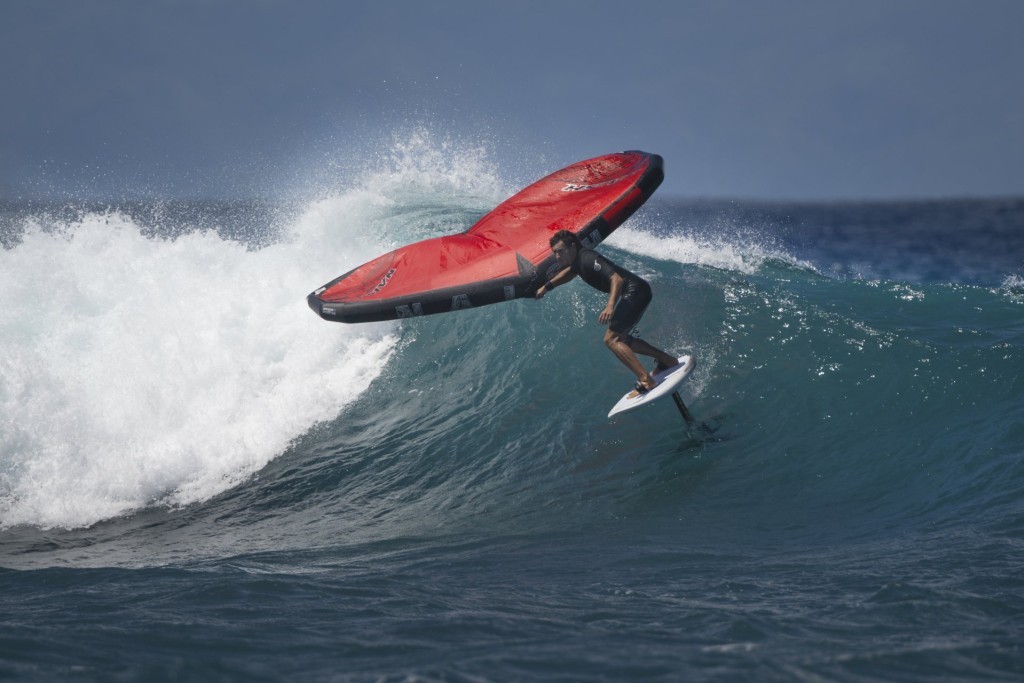What is Wing Foiling?
Wing foiling, also known as wing surfing or wing boarding, is a relatively new watersport that combines elements of kitesurfing, windsurfing, and stand-up paddleboarding. The sport involves using a handheld inflatable wing to harness the wind and propel a small, hydrofoil-equipped board through the water. When learning, beginners can get used to controlling the wing using a stand-up paddle board, it helps to have a large fin in the middle of the paddle board to help it track upwind; these can either be strapped or glued to the paddle board. Once the control of the wing is mastered, it is time to move on to a proper wing board with a hydrofoil, the rider can now learn to combine the two facets of the sport.
The wing itself is usually made of lightweight materials, such as ripstop nylon or PVC; they have an inflatable leading edge which provides shape and a central strut which has handles that the rider can hold and use to control the wing. By manipulating the wing’s angle and position, the rider can catch the wind and generate forward motion. The rider can also steer and control the board using their weight and the wing’s position.
There are lots of different types of boards and hydrofoils, when learning a bigger board with a volume of around 120-140l will make it easier; if you are a heavier person, you will need an even bigger board. Boards can be hard, made from foam, fibreglass and epoxy, or soft, inflatable using the same technology as stand-up paddle boards. Hydrofoils come in all shapes and sizes; when learning, bigger is better. The hydrofoil consists of a mast which attaches the board to the foil, and the hydrofoil itself, combines a front wing, fuselage and rear wing; the principle is exactly the same as an aeroplane, the front wing provides lift, and the rear wing provides stability.
One of the key advantages of wing foiling is its versatility. Because the rider can control both the wing and the board, they can adjust their speed and direction to suit a variety of conditions. For example, in light wind conditions, the rider can use the wing to generate lift and ride the board over the water’s surface. In stronger winds, the rider can use the wing to generate speed and launch the board into the air using the hydrofoil. Wing foiling is also amazing in waves, you can use the wing to catch the wave and then harness the power of the wave with the hydrofoil to ride it, “flagging” the wing out behind you until such time as you need the wings power again.
Because the wing is handheld and can be quickly depowered or dropped in case of emergency, the risk of injury is lower than with other wind-powered sports such as kitesurfing; this makes it a popular choice for younger riders and people who don’t want to physically attach themselves to a powerful kite. Because there are no lines, you don’t need as much space either; spots, where kitesurfers couldn’t launch due to a lack of room, are now opening up for wing foilers. Wing foiling also works really well in gusty winds, meaning mountain lakes are perfect for the sport. However, like any watersport, it is important for riders to have a basic understanding of wind and weather conditions, as well as safety protocols and equipment usage.
To start with wing foiling, riders will need a few basic pieces of equipment. In addition to the wing, riders will need a hydrofoil-equipped board and a wetsuit or other appropriate water apparel. It is also recommended to use a helmet and impact vest for added safety.
Overall, wing foiling is a thrilling and dynamic sport that offers a new way to experience the wind and waves. Whether you are looking to try something new or to expand your existing watersports repertoire, wing foiling offers a unique and exciting challenge that is quickly gaining popularity around the world.












